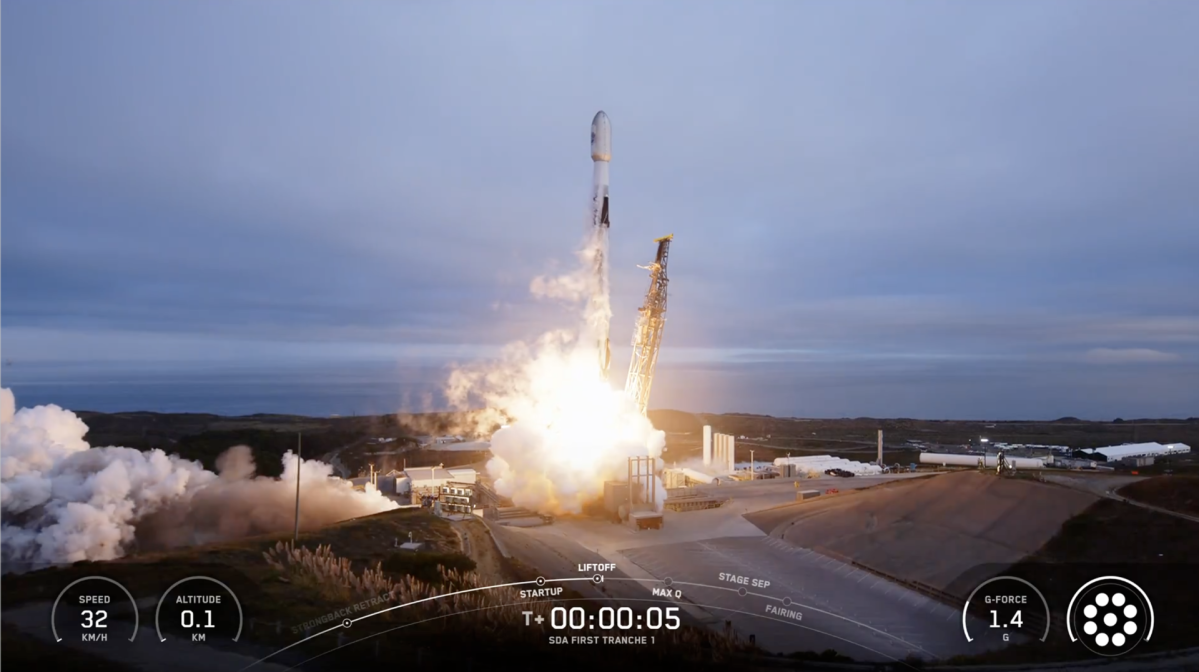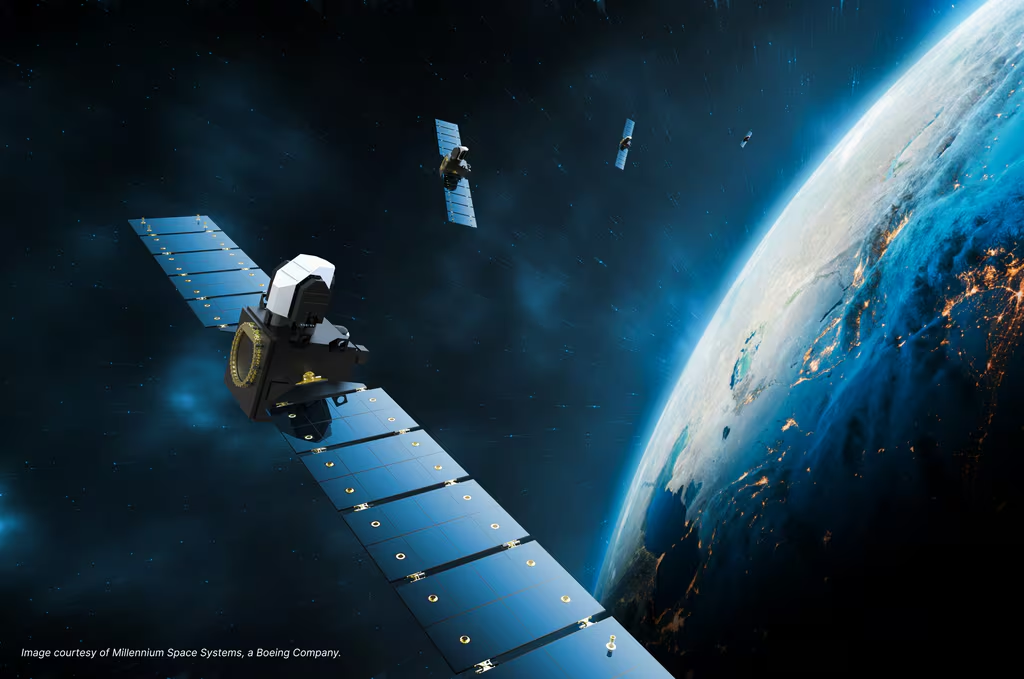SDA kicks off launch campaign for first operational data transport sats

The Space Development Agency deployed the first batch of operational data transport satellites for the Proliferated Warfighter Space Architecture (PWSA) Wednesday morning, beginning a 10-month launch campaign that has been delayed by almost a year.
The 21 space vehicles put on orbit are part of the Tranche 1 transport layer in the PWSA, a planned constellation comprising hundreds of satellites stationed in low-Earth orbit (LEO) to provide warfighters with critical data relay and missile warning and tracking capabilities. The payloads, built by York Space Systems, were hoisted via a SpaceX Falcon 9 rocket from Vandenberg Space Force Base in California.
The launch marks the first successful deployment of operational satellites developed under Tranche 1 of the PWSA program, with the 21 payloads giving initial coverage for the space-based data transport layer and capabilities such as Link-16, Ka-bands and optical downlinks, Acting SDA Director Gurpartap “GP” Sandhoo told reporters Tuesday ahead of the launch.
“This is the first time we’ll be able to start working with our [combatant commanders] and our joint force to start integrating space into their operations and getting warfighters used to using space from this construct,” he said. “Space has been around for a long, long time. But most of space has been in the intelligence collections aspect of things. … This is the first time we’ll have space as part of the operational fight.”
Since it was established in 2019, SDA has set out to spearhead a shift in how the Pentagon can develop, procure and deploy space-based systems for military operations. The PWSA differs from past constellations that relied on a few expensive satellites to conduct a mission. Instead, the agency focuses on rapidly fielding a large number of smaller sats to LEO in tranches — each one improving the coverage and capabilities of their predecessor — every two years.
SDA plans to conduct five more missions to put the remaining 105 Tranche 1 transport satellites on orbit, with the intent to hold one launch per month. Each mission will continue to increase Tranche 1’s coverage area, until all 126 data transport vehicles are on orbit to provide “regional coverage” targeted towards U.S. Indo-Pacific Command’s needs, Sandhoo said.
Once more Tranche 1 transport layer sats are in space, SDA will start working with deployed forces to integrate the capabilities into training and operations — an effort dubbed “warfighter immersion” that will begin sometime in mid-2026, he added.
Tranche 1 will consist of 158 platforms in total — including 126 in the data transport layer, 28 in the missile tracking layer and four experimental demonstration birds. York Space Systems, Northrop Grumman, Lockheed Martin and L3Harris are the prime contractors on the program.
The agency expects to begin launching satellites for the Tranche 1 tracking layer sometime in early 2026, Sandhoo said.
Wednesday’s mission comes after SDA postponed Tranche 1’s launch by a year. The original deployment date was scheduled for fall 2024. The delays were largely caused by supply chain bottlenecks that emerged due to the large number of space vehicles the agency was ordering, and the industrial base’s challenge to deliver critical parts on time and at the scale required.
As it looks toward the future, Acting SDA Deputy Director Mike Eppolito told reporters that the agency is seeing improvements in the supply chain and does not expect there to be significant impacts for Tranche 2.
“I think we always understood we would have some growing pains here as we got the supply chain up and operating,” Eppolito said. “Those supply chain issues tend to cascade into your integrated tests later in life, when you don’t have the components you need [or] when you don’t have the [engineering development units] that you need to be able to get into tests.”
Furthermore, Sandhoo noted that issues in validating on-orbit laser communications — which were the highlight of a February report from the Government Accountability Office — have largely been resolved. The capability involves using optical comms terminals to transmit data via laser links between satellites, as well as terrestrial-based receivers.
According to the GAO, SDA had not successfully demonstrated the full range of the laser link technology as of late 2024. But Sandhoo said the agency has validated its ability to communicate between sats made by different vendors, and established both space-to-ground and space-to-air laser links.
“All of that has been done at this point, and all that happened literally within the last six-to-eight weeks,” he said. “So, we are fairly confident that it’s doable at this point.”





